
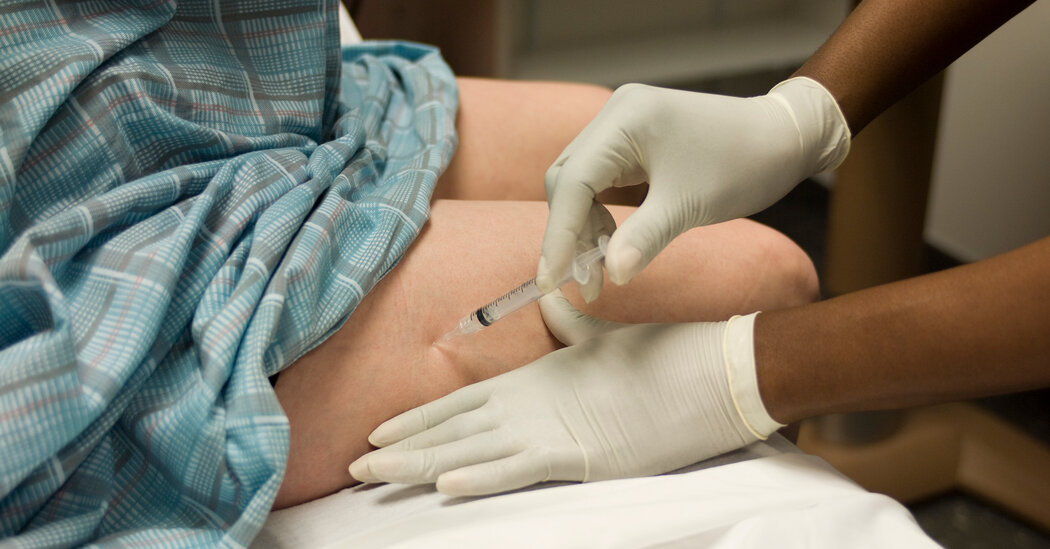
By now most people are familiar with how the Covid-19 vaccine is typically administered: a quick jab to the upper arm. But there is a lesser known place on the body where the vaccine has also been approved for injection: the thigh.
While getting the vaccine in the thigh is rare, there are some groups of people who may want to consider it. If you fall into one of the categories below and think you would be better off getting the Covid-19 vaccine in your thigh instead of your arm, it’s best to discuss it first with your doctor.
Lymphedema is a chronic and painful condition that causes swelling in parts of the body. It can develop in breast cancer patients, for example, who require surgery to remove lymph nodes from under the arm. Removal of the lymph nodes disrupts the flow of lymph, the extra fluid from tissues that would normally drain through the lymphatic system into the bloodstream, causing the fluid to back up and the breast, torso or arm to swell on the affected side.
In both the Moderna and Pfizer-BioNTech clinical vaccine trials, some participants experienced swollen lymph nodes at the armpit or the neck region two to four days following vaccination, on the same side where the shot was administered in the arm. This is a normal short-term side effect that means the body is responding to the vaccine. In the case of Moderna, the median duration of swelling was one to two days, and it lasted an average of 10 days in those receiving Pfizer-BioNTech.
For patients with lymphedema or at risk for lymphedema, however, this side effect could be concerning. If someone has lymphedema in both arms or if a patient is at risk of lymphedema in both arms, then some medical institutions are recommending that their patients get the Covid-19 vaccine in the thigh as a precautionary measure. The concern is that the vaccine could either make the arms swell even more or, for those who are at risk of lymphedema, create worrisome symptoms where there were none.
The immune response might also be less efficient if the shot is administered in an arm without lymph nodes or one that has impaired lymphatic drainage.
“The lymph vessels are responsible for draining fluid out of all of our tissues, so if your lymphatic drainage isn’t good, your tissues swell from fluid — and that would also mean you wouldn’t carry a vaccine very efficiently from tissue to lymph node,” said Marc Jenkins, director of the Center for Immunology at the University of Minnesota Medical School.
Patients who had lymph nodes removed from one arm may get the vaccine in the unaffected arm rather than the thigh, said Cheryl Brunelle, the associate director of the Lymphedema Research Program at Massachusetts General Hospital in Boston.
Swollen lymph nodes in the armpit can be a sign of breast cancer. If someone with a history of breast cancer didn’t know that the Pfizer-BioNTech or Moderna vaccines can produce swollen lymph nodes, it could be “very scary for her, thinking it may be a recurrence,” Ms. Brunelle said.
To alleviate potential concerns, people with a history of breast cancer can opt to get the vaccine in the thigh if they wish.
Coronavirus vaccinations can cause enlarged lymph nodes in the armpit or near the collarbone that will show up as white blobs on mammograms and potentially be mistaken as a sign of cancer. The Society of Breast Imaging recommends trying to schedule your routine screening mammogram before your first Covid-19 vaccine dose or at least one month after your second vaccine dose. But an alternative plan would be to get the vaccine in your thigh instead.
“Injection in thigh would be extremely unlikely to lead to armpit nodes swelling,” Dr. Constance D. Lehman, the chief of breast imaging at Massachusetts General Hospital, told The New York Times earlier this month.
If you prefer to get the vaccine in your arm and have already scheduled your mammogram, you can keep that appointment — as well as your vaccine appointment — and call your breast imaging center ahead of time to let them know about the timing of your vaccine.
If you received the Covid vaccine in the arm in the last six weeks, your radiologist will expect to see lymph node swelling on the same side that you received the vaccine. This would be a normal finding unless the swelling continued for more than six weeks or there were other clinical concerns; in that case they would take more images as needed, Ms. Brunelle said.
This could take a little persistence. Covid-19 vaccine sites primarily give people arm vaccinations: It’s quick, efficient and there’s no need to find a private room to disrobe. Because the vast majority of people will receive arm injections, some vaccination sites may not have staff who are trained to inject in the thigh.
“I just advise patients to call ahead, let the vaccine clinic know or the pharmacy know that they’re asking for the vaccine in the thigh,” Ms. Brunelle said. “I also counsel patients that if a local facility or practitioner giving the vaccine is not familiar with the thigh as an approved alternate site, the patient can share the C.D.C. Standing Orders document that lists the thigh as an alternative site for both the Pfizer and Moderna vaccines.”
In New York City, people visiting health department vaccination sites can speak with staff if they have concerns about getting the vaccine in the arm, said Michael Lanza, a health department spokesman. These sites also have “quiet rooms” where thigh injections can be performed discreetly, he added, but “it should only be done when medically necessary.”
Experts say not to worry if you already got vaccinated on the side where you had breast cancer or if you were vaccinated in the arm that had fewer lymph nodes; what is important is that you received the vaccine.
“We don’t want to scare women who already got vaccinated,” said Dr. Alphonse Taghian, director of the Lymphedema Research Program at Massachusetts General Hospital. “It is possible there will be no problem at all.”
To learn more, Dr. Taghian and Ms. Brunelle will be surveying current and former breast cancer patients about the side effects of the vaccine to better understand how many patients report swollen lymph nodes, as well as when and how long the symptom occurs. They hope to have results before the end of the year.
Dr. Taghian encourages patients with a history of cancer to contact their oncology team with questions or concerns, and to tell their doctor if they develop new signs of swelling.
The Covid-19 vaccines are designed to be injected into muscle, and the muscles of the upper arm are convenient for shots and thought to be less painful than some other areas of the body. But a vaccine can be injected into other muscles, provided they are near some of the hundreds of lymph nodes that exist in the body. The upper thigh, for example, is located near multiple lymph nodes and has already been shown to generate an effective immune response after vaccination.
Lymph nodes are “absolutely critical for generating immune responses,” said Dr. Akiko Iwasaki, a professor of immunobiology at Yale University.
When a vaccine enters the arm or thigh muscle, it gets carried into a nearby lymph node, she added. There, the vaccine is taken up by special cells that teach the white blood cells, known as T cells and B cells, to either become killer cells, which seek out and destroy coronavirus-infected cells, or antibody-secreting cells.
Decades ago, other vaccines were often injected into the buttocks. But scientists now understand that the layers of fat cells in our bottoms are too numerous to allow easy access to the muscles and lymph, making the immune response inefficient. In addition, vaccination in the buttocks is generally not done to avoid injury to the sciatic nerve.
24World Media does not take any responsibility of the information you see on this page. The content this page contains is from independent third-party content provider. If you have any concerns regarding the content, please free to write us here: contact@24worldmedia.com

Common Mistakes When Using Athletic Field Tarps
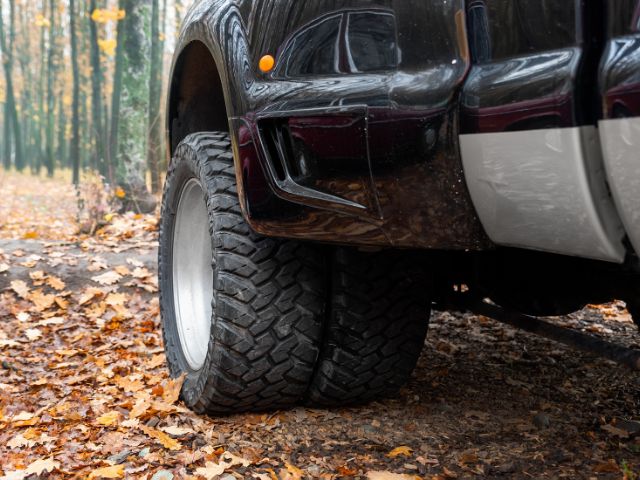
High-Performance Diesel Truck Upgrades You Should Consider

Warehouse Optimization Tips To Improve Performance
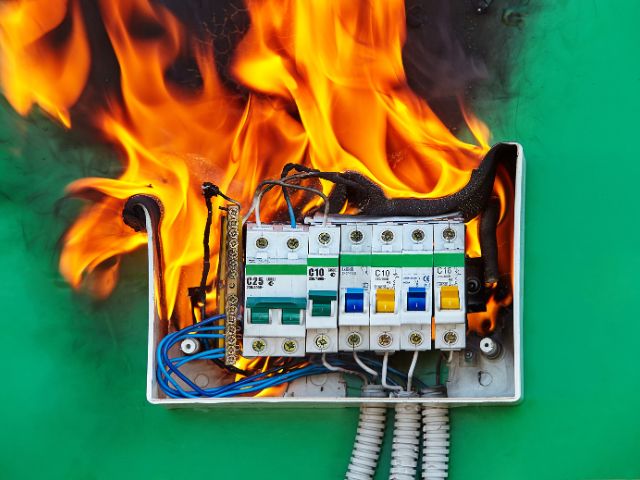
Fire Hazards in Daily Life: The Most Common Ignition Sources

Yellowstone’s Wolves: A Debate Over Their Role in the Park’s Ecosystem
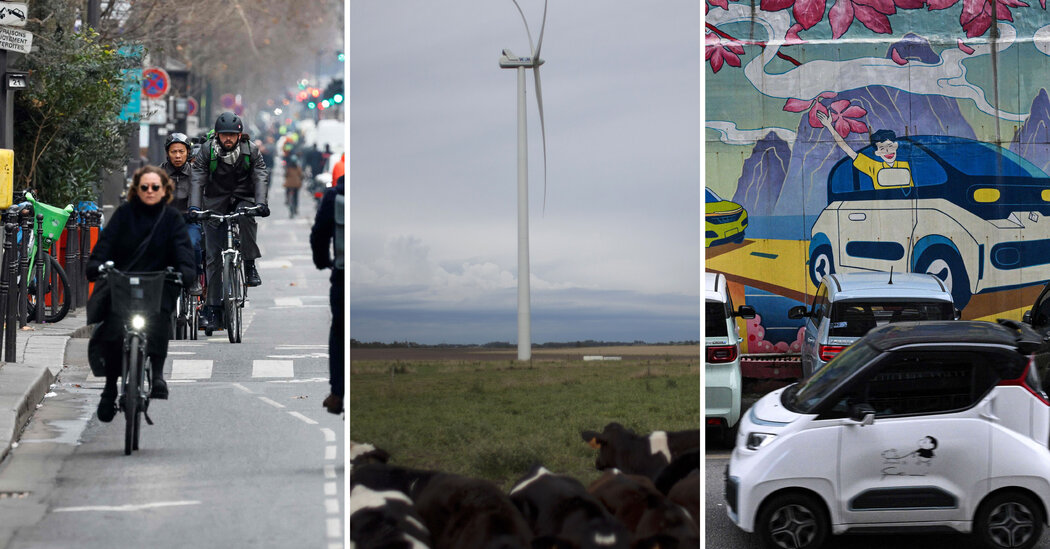
Earth Day 2024: A Look at 3 Places Adapting Quickly to Fight Climate Change

Millions of Girls in Africa Will Miss HPV Shots After Merck Production Problem

This Lava Tube in Saudi Arabia Has Been a Human Refuge for 7,000 Years
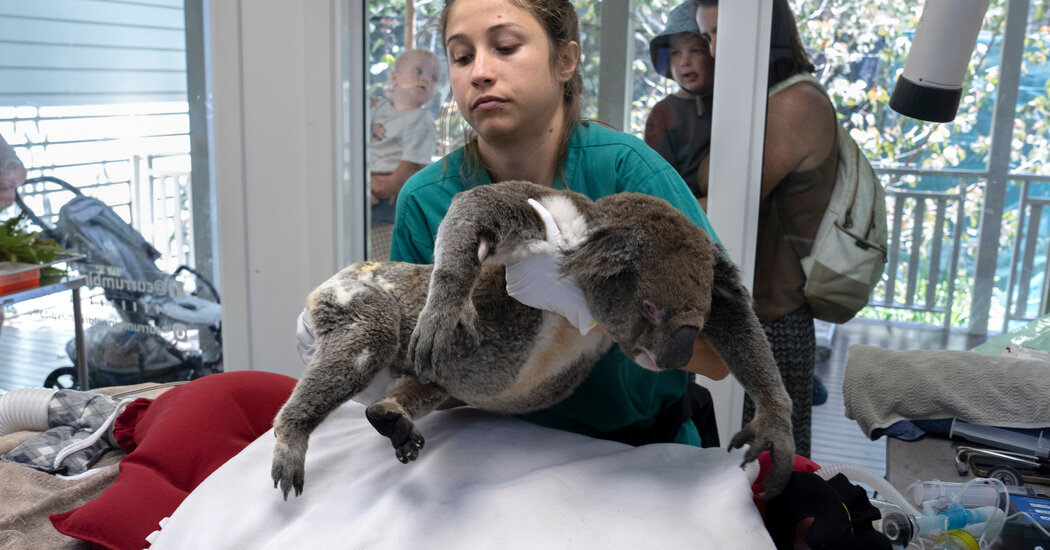
Four Wild Ways to Save the Koala (That Just Might Work)

National Academy Asks Court to Strip Sackler Name From Endowment
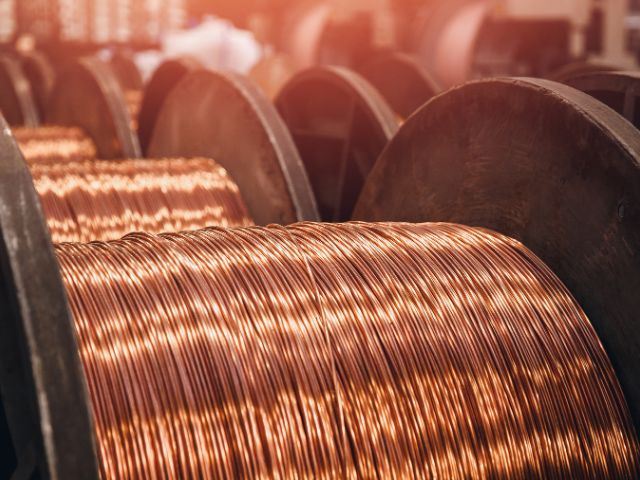
Ways Industrial Copper Helps Energy Production
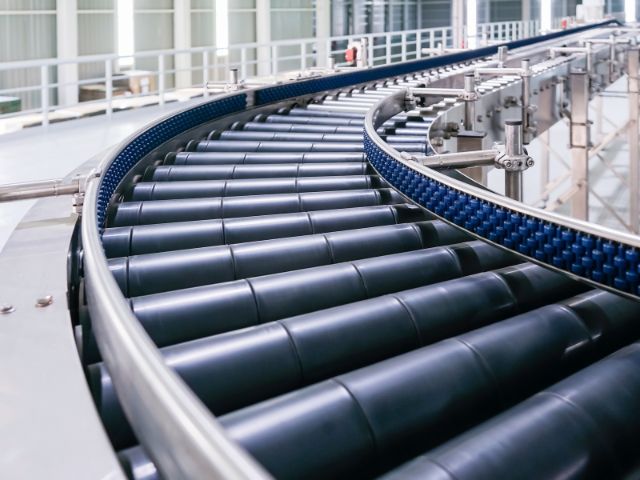
The Ins and Out of Industrial Conveyor Belts